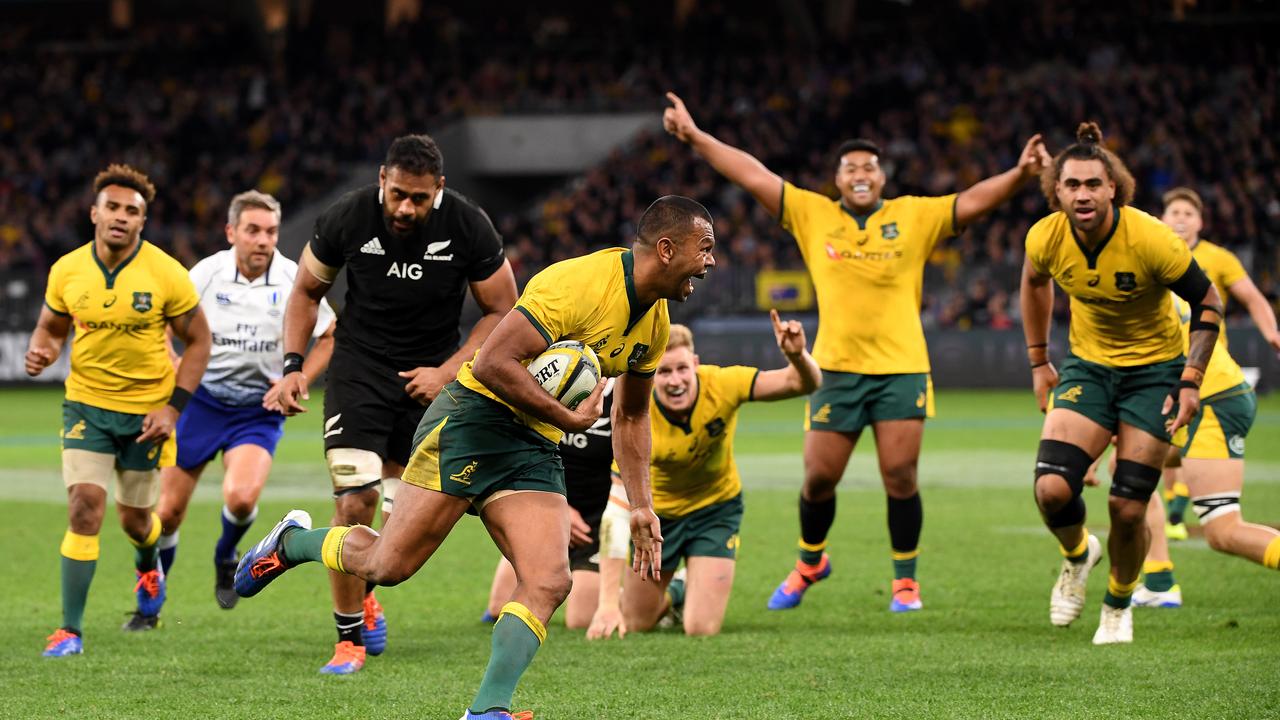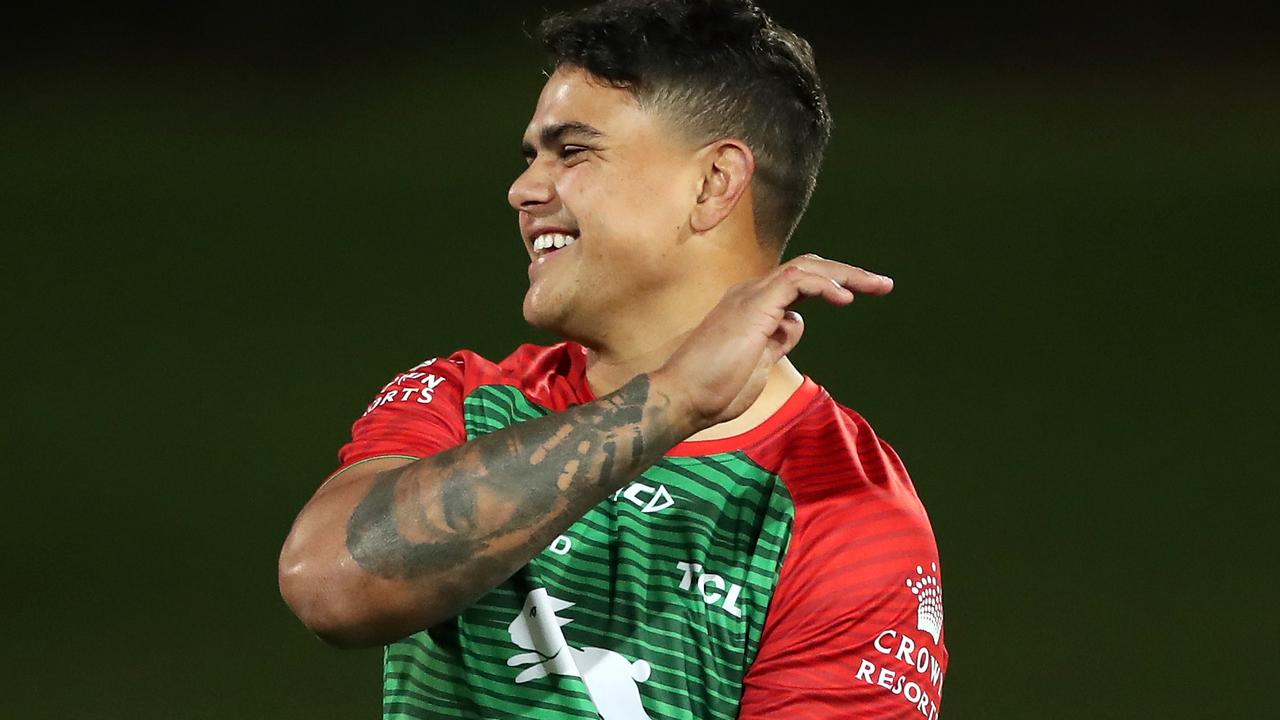USA v Wallabies: five things we learnt from Australia’s win over the Eagles
AFTER the Wallabies indifferent performance against the Eagles at Soldier Field, we run the rule over Australia’s last Test before the Rugby World Cup.
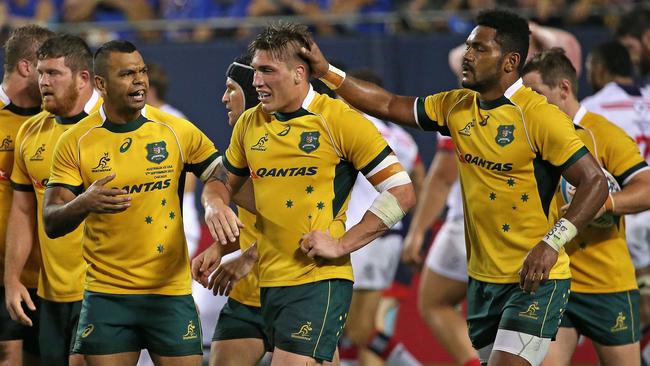
Opinion
Don't miss out on the headlines from Opinion. Followed categories will be added to My News.
AFTER the Wallabies indifferent performance against the Eagles at Soldier Field, we run the rule over Australia’s last Test before the Rugby World Cup.
1. WALLABIES WILL NEED PLENTY IN RESERVE
The NBC graphic above the score on the TV coverage optimistically declared the Wallabies-USA clash a “International Rugby Classic”. It was no classic, for Wallabies fans at least.
And to be fair it was never going to be. But Australia had a chance to show in Chicago why they’ll head to the World Cup ranked second in the world by posting a sizeable and clinical win.
They only got about halfway to sending that message to the globe. A poor first half under the Eagles’ defensive pressure was followed by a more dominant second stanza, but scoring 50 points on the Yanks was probably a reasonable pass mark (they lost to club side Harlequins last weekend) and the Wallabies finished with 47. Just under.
MATCH: Wallabies clip Eagles’ wings in Chicago
PLAYER RATINGS: who starred and who flopped
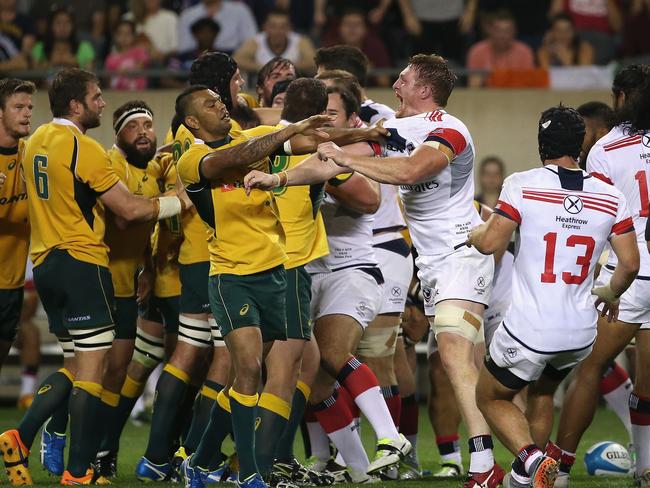
A concern? Most would say no, given it was more a Wallabies “B” team and nothing like the “A” side who’ll meet against Fiji in the World Cup opener in Cardiff on September 23. But here’s the rub: the Aussie “B” team will play four days later against Uruguay, and given Australia swims in the pool of death, the ability of the B-Boys to rattle up a healthy scoreline could be vital to the whole Wallabies campaign.
Given recent results in Europe, it’s feasible the three big teams in Pool A (Australia, England and Wales) could have a win and a loss each from their clashes — meaning for and against the “lesser” teams of the pool, Fiji and Uruguay, will count big time.
In particular Uruguay, who were pumped by 40 by Japan two weeks ago, will need to be clinically dispatched.
Attack stuttered in Chicago.
The Wallabies have talked up a new-found capacity to mix-and-match and have a seamless, whole-of-squad tactical execution. They even stuck with the plan to build depth over a possible Bledisloe Cup win in Auckland.
But the seams could be seen in the Wallabies’ first half at Soldier Field and up against a well-structured, physical US defence, unsurprisingly Australia looked like a team that had never played together before.
Wallabies fans will hope time in the saddle will be beneficial for the World Cup task ahead.
2. SELECTION SPANNERS THROW IN THE WALLABIES’ WORKS
Michael Cheika and assistants no doubt had an “A” team in mind for the World Cup opener before the USA clash. It is probably not the same team now.
No injuries was good news and several eye-catching performances no doubt sent them back to the selection table for the Fiji clash.
In his first game back from injury, Will Genia’s threat near the ruck helped bring a more direct attacking option than Nick Phipps’ fast-service style. Genia’s leadership was also noticeable in a side that can often look at each other for direction when pressure comes on.
The Wallabies’ struggle to adapt in-game in the opening 40 minutes is a good example. It shouldn’t take a team talk at the break to change course but often has this year.
Matt Giteau’s nice touches at no. 12 perhaps may have consigned Matt Toomua to a bench role, while Kurtley Beale showed he’ll be a key impact man as well in the World Cup.
Up front, the question is can three sevens work in a 23-man squad? Rookie Sean McMahon was in beast mode but how does he fit with Michael Hooper and David Pocock? Given his “follow me through this brick wall” mindset, you get the sense McMahon has to feature at this World Cup, in some way, shape or form.
Rob Simmons and Kane Douglas both showed their lack of game time this winter, and Dean Mumm and even Sam Carter made bigger impacts. So too did James Hanson, but the latter two aren’t in the World Cup squad. If twohookergate blows up like most of England thinks it will, Hanson showed he’s a ready replacement who can be trusted to do a job — particularly when you consider back-up hooker Scott Sio threw one line out and it was lost.
Elsewhere, Bernard Foley didn’t use his 80 minutes to nail down the no. 10 and as far as wingers go, yet more question marks arose: Henry Speight and Joe Tomane battled, Rob Horne barely saw the ball and Drew Mitchell was in the stands.
3. DISCIPLINE KEY TO WALLABIES’ HALF-MEASURES
The Wallabies will have to continue being on their best behaviour if they’re to rely on dominant second halves to win them a World Cup.
Yet again in Chicago the Aussies powered away with a 33-point second half to win and that will have pleased Michael Cheika. Four wins in five Tests this year have followed the same script; the Wallabies have averaged 7.6 points in first halves in 2015 and 20.8 points in second halves.
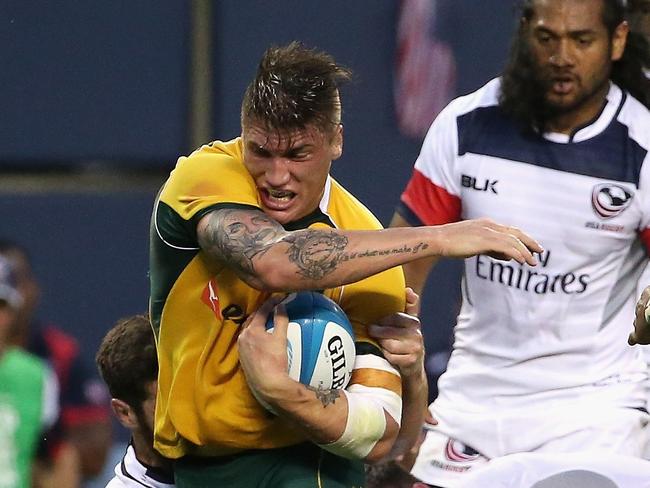
Fourteen points against the USA was the biggest score they’d taken into the sheds.
Of 18 tries since July, just four have come the first half.
But how much weight and worry should be attached to the Wallabies’ inability to get the scoreboard whirring in minutes 1-40?
Rugby is an 80-minute game with an 80 per cent win rate, the answer is not much right?
Yes but only as long as Australia’s defence and discipline stay the course too.
The Wallabies’ second-half success has come because they’ve not let their rivals get away either.
Australia has actually trailed more than they’ve led at halftime in 2015 but the margins have been small. They’ve conceded an average of 9 first-half points and only conceded a total of three tries in five matches.
Crucially, when considering the World Cup ahead, the Wallabies did not submit to scoreboard pressure via penalties. Cheika’s assorted teams gave up just nine first-half penalty goals in total.
This is where the rubber will hits the road in pool A, and beyond. England and Wales are experts at ticking the scoreboard along via the boot, building pressure and making a second-half climb infinitely steeper. Discipline will be crucial if Australia are going to keep banking on second-half salvation.
4. BREAKDOWN BURGLARS TO CASE THE WALLABIES
He came off his suspended sentence last week but hopefully Michael Cheika didn’t pop in to see Jaco Peyper in the referee’s rooms again to ask about breakdown rulings. The South African official was happy for USA players to flirt with the offside line to disrupt Australia’s ball and rumble the halfbacks, and it worked a treat for them.
So the Wallabies can fully expect that to continue at the World Cup and blowing up over those sort of calls won’t help. The Wallabies forwards simply have to secure the ball better at the breakdown and offer more protection to the no. 9s.
Cheika’s sides often only send one or two cleaners in to a ruck, with other forward pods positioned wider to carry on the next phase. But that can and does open the door for disruption with stray boots or counter-rucks or pilfers; often the coach-killing kind in the red zone.
In the second half in Chicago more Wallaby bodies were banging into contact and their best try was Dean Mumm’s, based on six powerful phases of forward runners.
But the Wallabies will need to be far quicker in adapting to how much the referee is letting go and clean that area up on the run. Trips to the red zone can be rare at Twickenham.
5. A TIME FOR TAPER?
Heading into the USA game, the Wallabies got flogged in training at a muggy Notre Dame and it was asked of James Slipper that after the team had looked a touch tired in Auckland, might Michael Cheika taper their workload like swimmers before an Olympics?
Slipper laughed.
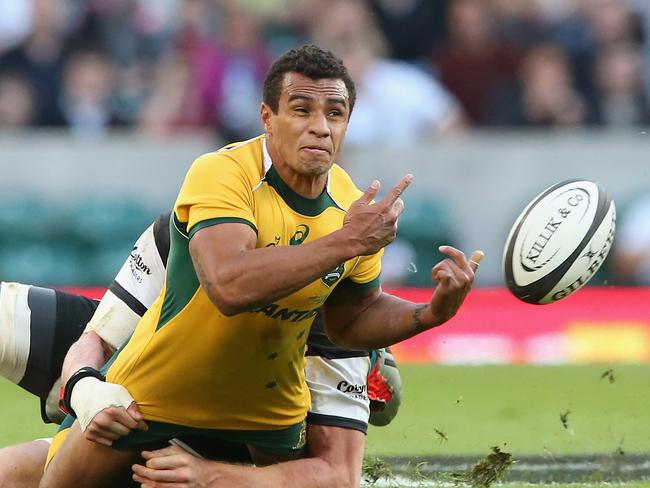
“Knowing Cheik I doubt it is going to taper off. It is always going to be tough training and he likes that theory of just hitting the wood consistently and over time just become battle hardened,” he replied.
Many Wallabies looked fatigued again in Chicago, however, and though it didn’t bite them as much as it could have against a top-tier sides, the question remains. Battle-hardened is one thing, battle-weary another; so do they need a breather?
The Wallabies conditioning staff are top-shelf so there will be a plan in action. One would assume a taper of sorts is coming and legs will be fresher at the World Cup.
A possible seven Tests in seven weeks means recovery will consume lots of time in-tournament and banked-up fitness trusted to get them through.
Originally published as USA v Wallabies: five things we learnt from Australia’s win over the Eagles

